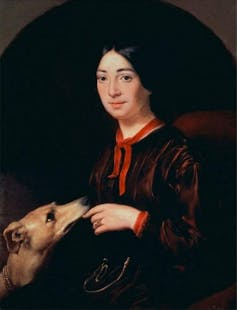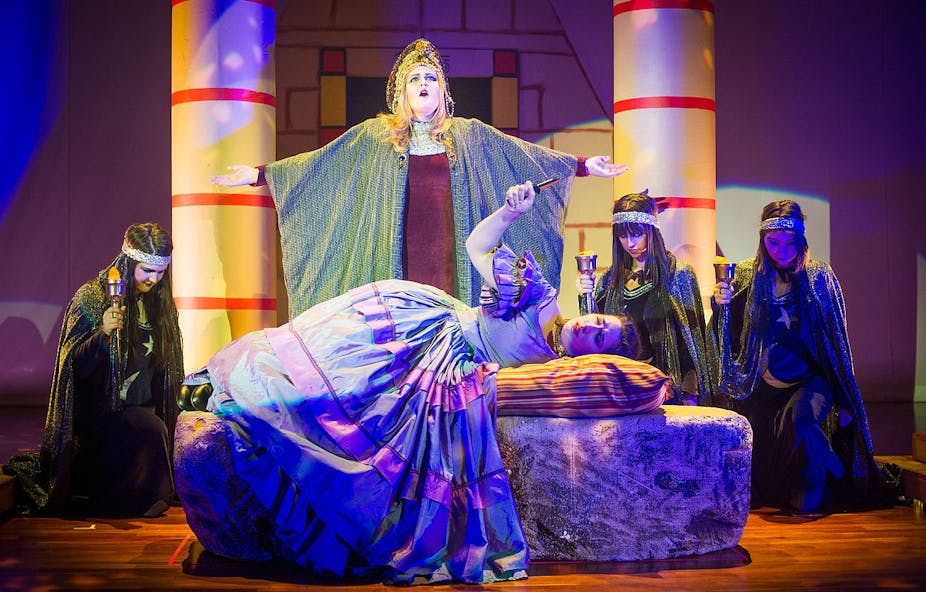Opera. Whether you love it, hate it or don’t understand it, whether you see it as a treasured art form or a dusty has-been, opera is woven into our popular culture. Let’s take a modern version of opera: a damsel in distress, a heroic male lead, a fantasy world, and everyone sings. Sound familiar? The princess movies of Disney can be seen as the direct descendants of opera.
Princess movies and opera alike reveal the model of ideal cultural femininity, with ideals centred around beauty and passivity. The conversation about opera – which can be seen as the original “princess story”, when viewed through the lens of gender equality – can make it more accessible and relevant. This involves not only a new look at beloved classics but the overdue discovery of works by female composers and librettists who reject or transform the rigid model for women. The tales of two grownup princesses in two different operas – one well known and another that should be well known – provide an interesting contrast.
Aggressive villains or passive heroines
The Magic Flute by Wolfgang Amadeus Mozart (1756-1791) and Emanuel Schikaneder (1751-1812), is a fairy tale story with a good prince, a captured princess, a wicked Queen, a male authority, and a happy-ever-after ending. Le Dernier Sorcier, composed by Pauline Viardot (1821-1910) with librettist Ivan Turgenev (1818-1883) is a fairy tale with a significant twist in who gets steer the moral ship. As in The Magic Flute, [Le Dernier Sorcier] offers a model of power to follow and view as acceptable. But that model is a woman and she that stands outside the two historically accepted possibilities for females, the aggressive villain or passive heroine. Let’s first look at the queen from The Magic Flute, in the villain role women inherited from the fairy tales.
We first encounter the Queen of the Night when she asks the prince, Tamino, to rescue her daughter Pamina from the clutches of Sarastro, her kidnapper. In Sarastro’s domain, Tamino and the audience learn that they’ve been rooting for the wrong person and gender in power. Clues pointing to Sarastro being a good guy, include the gravity of his voice (played by a bass) and the fact that his house is a temple. The two realms turn out to be squarely divided into the light and the dark, and the Queen of the Night is the ruler of the wrong 12 hours.
Le Dernier Sorcier, which premiered in 1869, is also a fairy tale and presents a similar group of characters – a magical Queen, a male lead and two young lovers. The Queen of the Elves embodies the natural world but challenges the “otherness” generally assigned to women. She takes on the role of protector to the female protagonist, Stella, yet her dominance isn’t undercut over the course of the opera. The queen’s forest kingdom has been stolen by Krakamiche, a sorcerer and Stella’s father, but her loss of sovereignty is temporary, and her strength undiminished. In text and music, Krakamiche is portrayed as deceptive and power hungry, much like the Queen of the Night. Weakened by years of misused power in a kingdom he stole, his once mighty castle is now a humble hut, protected by an ever thinning protective spell. His immoral role is confirmed by his musical lines; often quickly rising and falling in dissonant melodies.
Strong and steady

In Pauline Viardot’s opera, the queen takes the role protector and moral authority. She orchestrates the union of the two lovers with a steady and calm influence, not by force. This authority is substantiated musically through the use of a meter that is exclusively hers: 4/4. All of the music in Le Dernier Sorcier that contains four beats per measure either honours the queen or is sung by the queen herself. Both the introduction and the finale are both written in 4/4 as well, a quiet yet omnipresent assertion of the queen’s dominance in the operetta.
This choice of meter is significant, because of its prevalence in our musical world. Most of the songs you and I know, whether in popular or classical genres, are in 4/4. Giving a strong female character exclusive use of our culture’s dominant rhythmic pattern places her squarely in a place where we can view her as a positive female leader. Viardot further asserts the queen’s power in fluid, yet assertive and undulating waves of melody in her melodrama “Ramasse cette Rose”. This method paints the texture characteristic of the natural world which she rules.
In The Magic Flute, the Queen of the Night presents the type of female dominance found in most fairy tales and operas: imperious, cruel, destroying all in her path. When the Queen visits Pamina at night and sings her famous aria “Der Hölle Rache” (translated as “Hell’s revenge”), her audacity equals moral depravity. Not only is the queen invading a place that is not hers – and one she wants to claim as her own – but she also confirms her desire by commanding the execution of her rival.
Nonetheless, this is a moment of female power. In the extreme high notes of her coloratura cadenzas, for a brief moment the Queen asserts herself and embraces her “otherness” and her separation from the world of Sarastro. Like the mad scenes in tragic operas, it is a brief glimpse that women are capable of power. Even if female power almost always precedes death (sometimes these ladies just get banished, but that’s mostly in comic operas), it is often as good as it gets in opera. Pamina, the princess, embodies acceptable womanhood in opera: submissive, but also willing to take her life for the man she loves – moments after meeting him.
A new image of female strength
In Le Dernier Sorcier, however, Stella hints at a new image of female strength. In her duet with her father, she sings; “La vie est devant moi, Je veux, j'espère vivre, mes ailes ont poussé” (“Life is before me, I want to, I hope to live, my wings have emerged”). Her final declaration of independence is underscored by a key signature that is associated with her and not her father, with bold, fluid ascending lines that span an octave or more. Stella’s independence is just emerging, but her character a world away from meek Pamina. Viardot and Turgenev’s opera presents an intriguing contrast to our usual menu of weak acceptable female roles or strong yet self destructive ones. The roles of the Queen of the Elves and Stella present a departure from the stereotype through melody, rhythm and the script.
Opera as an creative form still has much to offer to the artistic world, but it is time for a paradigm shift and a recognition of the unbalanced gender portrayals of the past. The remedy lies in not only a new view of beloved well known works, but a much needed exploration of the works by women composers. Composers like Pauline Viardot allow us to flip the script on the portrayal of strong women and breathe new life into the genre.

